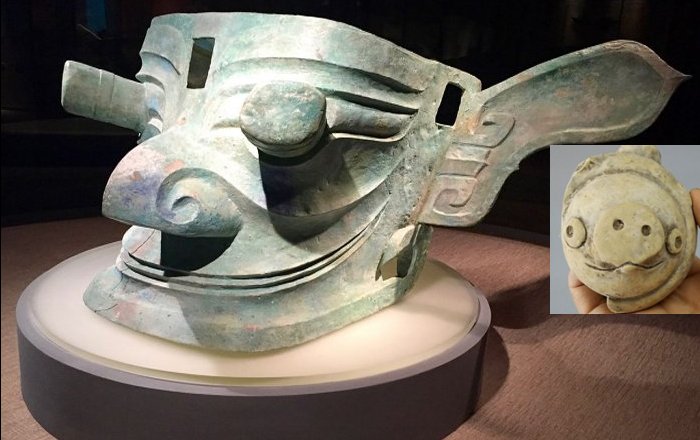A 5,000-Year-Old Settlement Found Near Mysterious Sanxingdui Ruins, China
On Tuesday, Chinese archaeologists revealed they had discovered an important site next to the ruins of Sanxingdui, which they claim to be a settlement about 5,000 years old.
For its striking resemblance to the main character in the Angry Birds mobile app, an ancient clay pig figurine has created a sensation on the internet. The fist-size artwork was found under the remains of a tribal settlement in southwestern China dating back almost 5,000 years.
It has sparked a trending topic in the country after people said it looked exactly like the Green Pig in the popular video game.
Archaeologists found the tiny sculpture while digging in the remains of a small ancient community outside modern-day Guanghan in Sichuan province.
The experts believe that the village was situated about eight kilometres (five miles) outside Sanxingdui, a mysterious Bronze Age kingdom. The tribe likely came into being around 5,000 years ago, and the pig figurine is thought to be 3,200 years old.
The piece of pottery has been described as ‘cute, vivid and delicate’ by the researchers, who say it represents the advanced aesthetic standards of the region’s prehistoric residents.
Chinese internet users expressed their amazement after a picture of the piece of pottery was released by the Sichuan Provincial Cultural Relics and Archaeology Research Institute.
On Weibo, the Chinese equivalent to Twitter, one person gushed: ‘It is the pig from the Angry Birds!’
Another reader wondered: ‘The Angry Birds? It’s like time travel.’
A third commenter joked: ‘The pig in the Angry birds. You have infringed the copyright.’
The research team claims to have discovered traces of continuous human activity on the archaeological site dating from 5,000 years ago until the dynasties of Ming (1368-1644) and Qing (1644-1912).
Officials plan to excavate 7,000 square meters (75,350 square feet) of the site, which is officially named Guanghan Joint Ruins. By the end of July, they had studied 4,500 square meters (48,440 square feet), according to an official post.
Apart from the pig figurine, experts found detailed carvings of a dragon and a phoenix under a broken clay plate, a totem symbolizing good fortune.
Other discoveries include daily utensils, such as vases and cups made with porcelain or stone.


